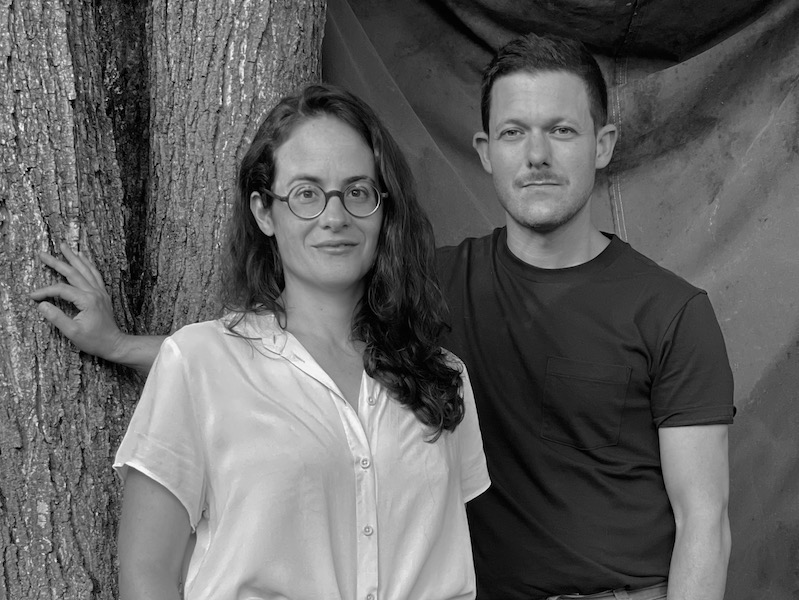 citizens
citizens
Marc El Samrani shares his experience of 'An Assembly'
[EN] A citizen's feedback on an IN SITU Artist's performance
29/05/2024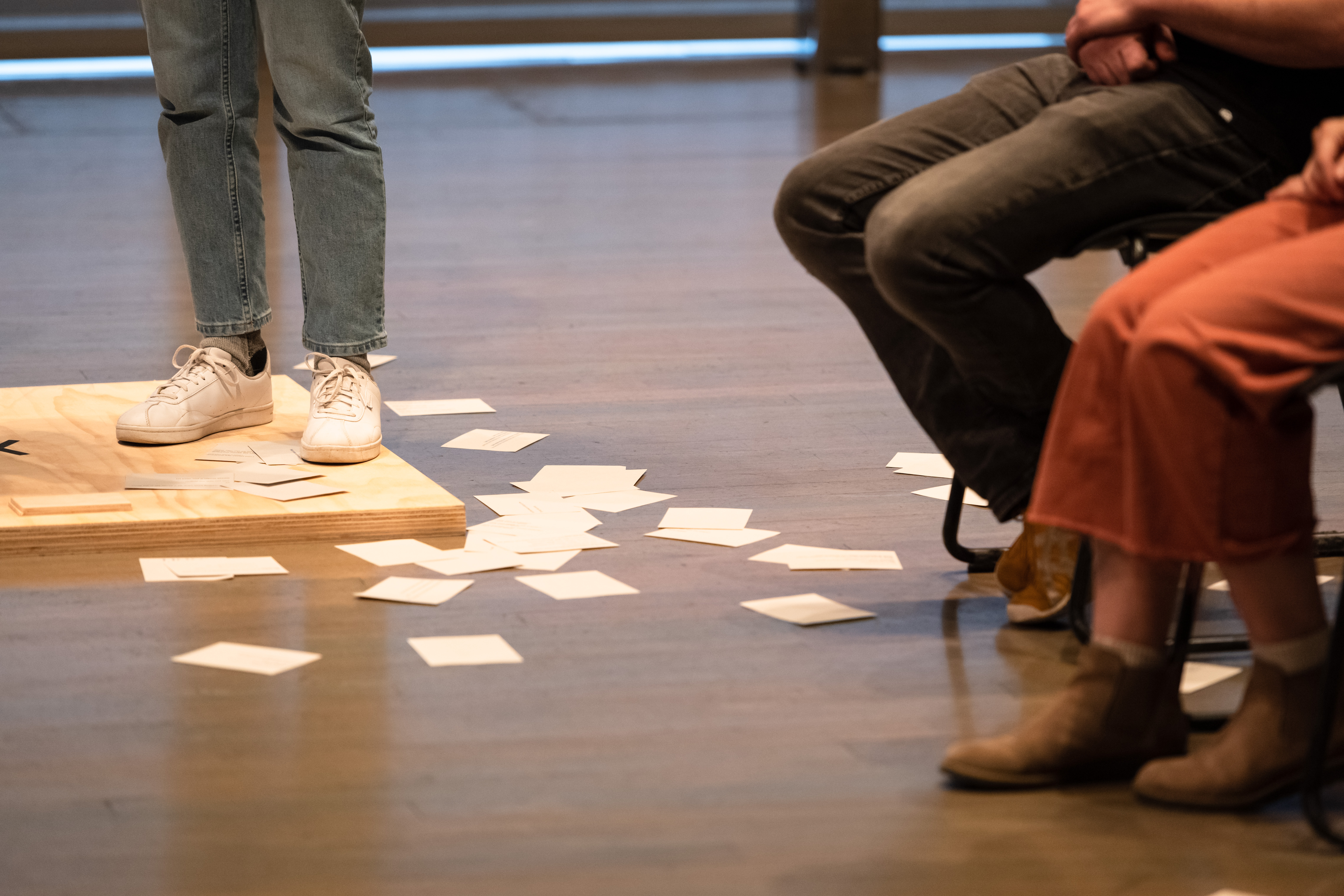
As part of the (UN)COMMON SPACES project, associate citizen of Lieux publics, Marc El Samrani looks back on his experience of An Assembly, a participatory work proposed by 600 HIGHWAYMEN, during the duo's visit to Rouen, France.
The project "An Assembly" by the company 600 HIGHWAYMEN offers a 70-minute artistic setup in a closed space, which is not necessarily public from a legal standpoint. This artistic proposal, the third part of the "A Thousand Ways" project, invites 16 participants, who register beforehand with the organizers, to engage together in a theatrical adventure. “It is a performance created by people who do not know each other. Sixteen members of the audience will gather for an hour and, with the help of a precisely written script, will build a story that evokes perseverance. This unique play offers a personal and moving experience – all without an audience.” The participants, invited into a closed space where 16 chairs are arranged in the center of the room, find themselves in front of a pile of cards that indicate the procedure to follow. The cards are placed on a visible wooden platform, and the performance only begins when one of the participants decides to pick them up and follow the instructions written on them. The project unfolds without any external interventions from the artistic team or organizers; it evolves with and for the 16 people present in this space at that specific moment (and therefore without any other audience).
Observing several performances [1]of this project in different places and contexts within the In-Situ network highlighted the emergence of moments of connection and disconnection in these various configurations. At the beginning of the setup, there was a prevalent feeling of “strange discomfort,” accompanied by curiosity and an eagerness to define and build the collective. The proposal remains, in its general lines, almost unchanged from one context to another but evolves based on the interactions of the constituted group. “This project works somewhat like a sponge in that it absorbs the interactions between the participants and adapts to the shape the group gives it.” | 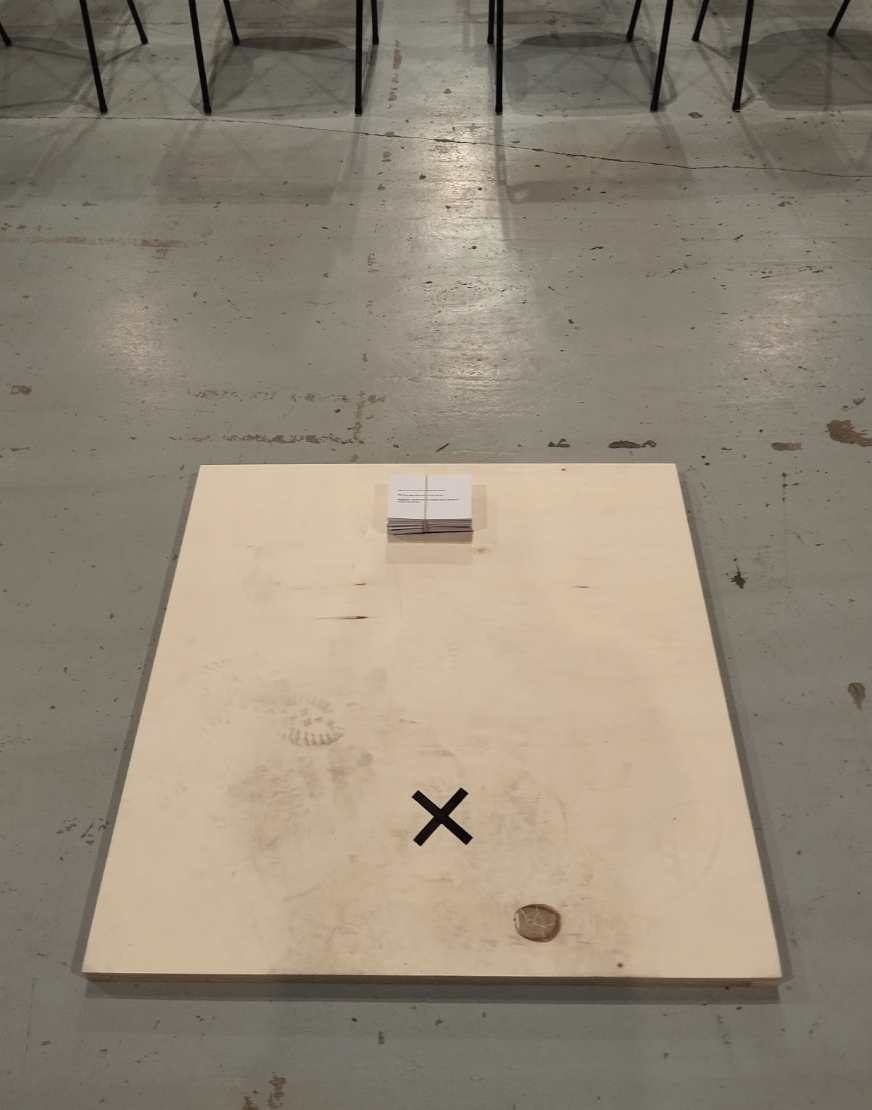 Photos of the project installation at Atelier 231 in Sotteville-lès-Rouen ©Marc El Samrani Photos of the project installation at Atelier 231 in Sotteville-lès-Rouen ©Marc El Samrani |
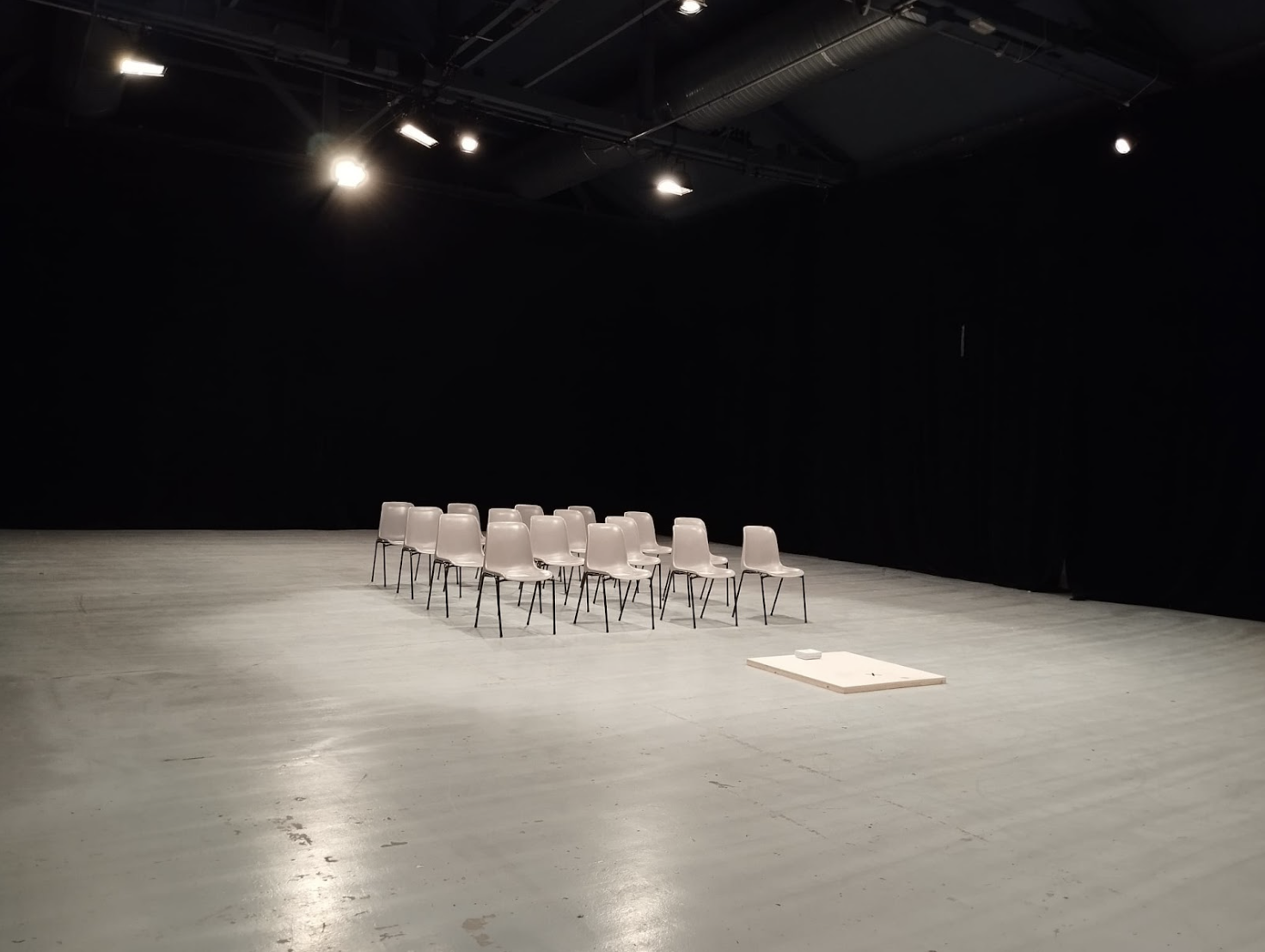 Photos of the project installation at Atelier 231 in Sotteville-lès-Rouen ©Marc El Samrani Photos of the project installation at Atelier 231 in Sotteville-lès-Rouen ©Marc El Samrani |
The instructions on the cards alternate between moments of exchanges and close interactions within the group, and moments of silence and retrospection for each member who isolates themselves from the group. Gradually, the cards generate several socio-spatial configurations among the participants. They induce movements and variations of bodies and objects in space, creating moments of intimacy and proximity that form and dissolve. “The work explores the boundary between strangeness and kinship, distance and closeness.”
Simple actions are sometimes initiated to materialize the formation of this group. One of the first actions requested is to form a circle and choose an object to pass around. This first symbolic gesture, as simple as it is, allows to “seal the group,” to establish a kind of trust, albeit fragile, among these strangers. It creates a ritual moment that enables participants to admit a principle of reciprocity and to acknowledge the presence of the other in this assembly. These multiple small actions primarily catalyze the initiation of moments of shared availability, the emergence of common attentional centers, mediators of the principles of connection.
“It’s like suddenly stepping out of your home and finding all these people around you, looking at you intensely and showing them everything you’re doing. Thus, strangely performative rituals would emerge. [...] In this project, a group forms and invents a way to be together. They spend private, intimate, and shared moments together. These actions highlight the relationships that form [...]. The participants start the performance as strangers, experience something together, and emerge as a collective, like a formed group. The rest of the environment becomes what is foreign to this group. Very little is needed for the construction and deconstruction of this group to occur. We are really instinctively programmed for this proximity. We just need triggers and containers for it to happen somehow.”
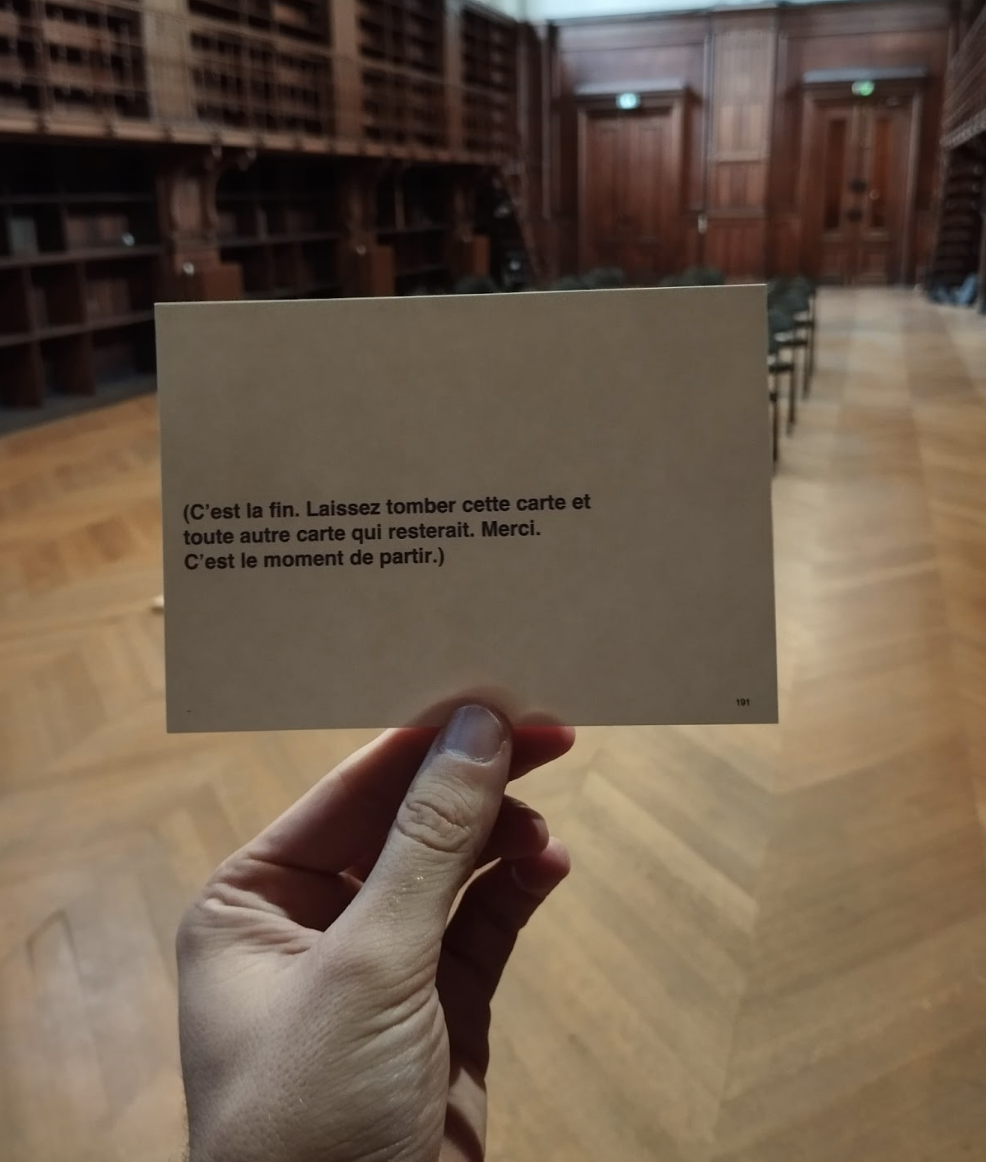 Photos of the project at the conservatory in Marseille ©Marc El Samrani Photos of the project at the conservatory in Marseille ©Marc El Samrani | The last ten minutes of the project invite, through instructions on the cards, all participants to leave the room, form a circle outside, and perform a few final actions. The project ends with a card asking the group to break up and each participant to go their separate ways. “It is then as difficult to speak first as it is to be the first to leave the circle formed outside.” These shared experiential micro-events establish relational and communicational dynamics within the group, strongly linked to this mediating setup. All stakeholders are aware that these emerging interactional spaces are limited by the duration of the artistic experience, and the act of closing this shared moment and breaking the formed circle implies ending the connections attached to it. The follow-up to these shared moments is up to the participants. Reactions and desires vary from one performance to another. “We wanted to chat for a long time after the project, so we suggested having a drink at the nearby bar,” confides one participant, “a desire to extend this shared moment with these people we don’t really know.” One of the groups during the performances in Sotteville-lès-Rouen dispersed right after the end of the proposal, which was scheduled during the Vapeur sur la Ville festival. A participant still noted, “These are people we will probably see again during the festival, or maybe elsewhere, and we will be aware of this experience we shared, even if we don’t know each other any better.” |
| This project offers another way to understand public spaces and to reflect on the formation of groups and interactional spaces. It initiates encounters and spaces of connection through the mediation processes it starts. The continuation of these spaces is uncertain and depends on the participants’ willingness to renew and extend them. It potentially catalyzes desires for meetings, exchanges, and activation of spaces that are not necessarily public but become so through the artistic experience. It does not seek to impose a long duration but to offer the bases for potential productions of connection spaces. Certainly uncommon public spaces... |  Photos of the project at the conservatory in Marseille ©Marc El Samrani Photos of the project at the conservatory in Marseille ©Marc El Samrani |
[1] Project’s presentation on https://600highwaymen.org/a-thousand-ways/ | |
